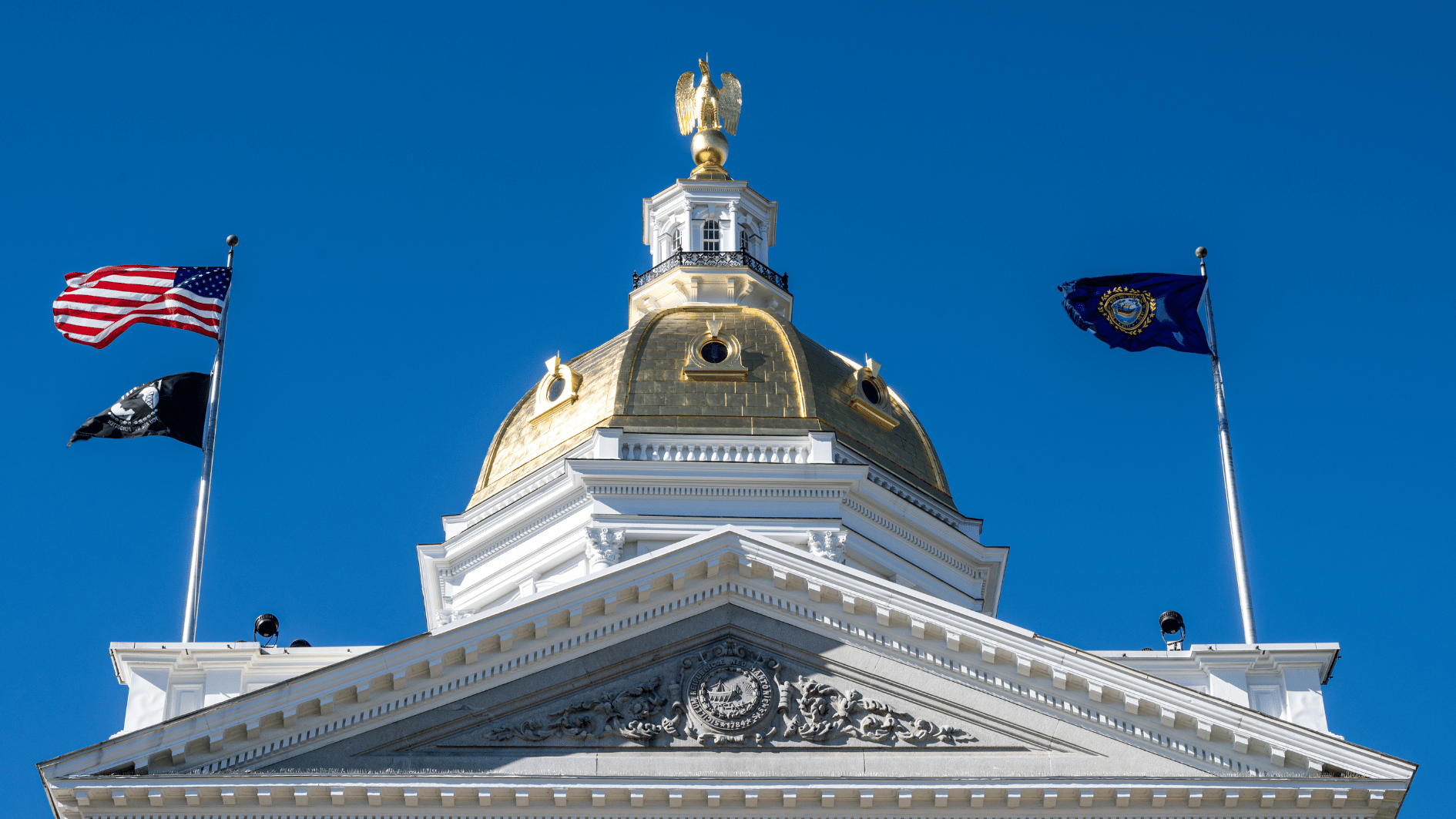Image source: Canva.com
New Hampshire’s Public Utilities Commission is holding hearings this week on a policy that could shape the future of the state’s solar industry.
It’s called net metering, and it’s the way that people with solar panels on homes and businesses get compensated for the electricity they feed back into the grid.
The issue at hand is how much that power is worth.
“Net metering right now is the bedrock of the economics of small-scale renewable energy generation in the state of New Hampshire,” said Sam Evans-Brown, the executive director of Clean Energy New Hampshire. “Without net metering, it’s totally unclear how it would be that you would go solar in your home.”
The policy has been controversial over the past decade, especially as lawmakers decided size limits for systems that could net meter.
But many of the parties participating in this week’s hearings have come to an agreement on a new proposal for how net metering should look moving forward.
The group, consisting of the state’s investor-owned utilities, the consumer advocate, energy and environmental advocates, the Granite State Hydropower Association, Standard Power of America and Walmart, is proposing to keep rates the same as they are now for two years, while utility companies gather data and develop a new rate that takes into account what time of day customers are drawing power from the grid or pushing their electricity onto it.
Generally those time-of-use rates involve lower prices during periods of low electricity demand and higher prices during periods of high demand.
The hearings come after one of New Hampshire’s three Public Utilities Commissioners, Carleton Simpson, resigned. Simpson had dissented on decisions at the Commission in the past, and appeared friendlier to renewable energy interests.
An evolving system
As the rest of the country figures out how to compensate small-scale renewables for their contributions to the grid, states are taking a variety of approaches.
In California, where solar has grown fast, regulators cut net metering dramatically in a 2022 decision that then faced legal pushback. The 2022 decision was meant to encourage people to use battery storage and sell power to the grid during the evening, when the grid is more stressed, according to the California Public Utilities Commission.
But other states in New England have compensated renewables through net metering more generously, according testimony from an expert for Clean Energy New Hampshire at the Public Utilities Commission.
Evans-Brown said New Hampshire is not adopting solar power as quickly as neighboring states, but still called solar “one of the bright spots” in the state’s efforts to transition to clean energy.
“Somewhere in the neighborhood of 700 people are employed doing solar in the Granite State,” he said. “So this is something that’s really, really important that we don’t screw up.”
Initially, New Hampshire’s net metering policy allowed people with renewable energy generators smaller than 100 kilowatts to sell their power to the grid for the same price that electric customers pay to buy power for the grid.
That rate includes a variety of factors, like the cost of supplying electricity itself, the cost of keeping up the transmission system that connects power across long distances, and the cost of keeping up the distribution system that delivers electricity more locally.
In 2017, the state dropped the rate that new small renewable energy generators could get, or in industry-speak, the “net metering credit,” to include 100% of the cost of the power supply, 100% of the transmission rate, and 25% of the distribution rate.
In 2022, a state-commissioned study on the value of distributed energy resources (things like small-scale rooftop solar arrays) provided more data around how those resources affect the grid.
The study showed those resources do have value beyond just the power they produce. For example, generating electricity closer to where it’s used can help avoid costs associated with transporting electricity across long distances.
The study also showed that under the current net metering rates, monthly bills for customers without renewable resources were projected to increase between 1% and 1.5%.
For New Hampshire’s consumer advocate Don Kreis, that study helped show that net metering wouldn’t be an undue burden on electricity ratepayers without renewable energy of their own.
“It certainly put to rest the concern that there is an unreasonable cost shift happening now,” he said. “Whether that situation will change so that we have to adjust the rates in three years or five years, that’s possible. But that’s the way utility rates work all the time.”
Now, Kreis said, the conversation around net metering is moving past whether there’s value to small-scale renewables and whether they create a threat of cost-shifting.
“I think this marks the graduation from high school of the net metering industry in New Hampshire,” he said.
In addition to asking utilities to come up with time-of-use rates, the proposal currently in front of state regulators would also include fees for applications for net metering projects. New projects that come online in the next two years would be able to use the current net metering rate for 20 years, before transitioning to new rates in place.
“I don’t think this is a change,” Kreis said. “It’s more of a reasoned approach to the challenge of making sure that we grow net metering in New Hampshire in a way that is economically and practically sustainable.”
The state’s Department of Energy didn’t sign on to the settlement agreement, instead saying they’d like to see the status quo continue.
The Community Power Coalition of New Hampshire also filed their own proposal.
Henry Herndon, the director of member services at the Community Power Coalition, says they’re envisioning a more “market-based” approach, where utility companies wouldn’t decide the net metering rates, and renewable generators would be compensated based on price signals.
The coalition is also hoping to see medium-sized renewable projects, like community solar arrays, be compensated for helping avoid the costs of transporting energy across long distances. Under the current system, projects under 100 kw are compensated for that, but larger ones aren’t.
“Community Power Coalition of New Hampshire feels there’s a real opportunity for the state to be a leader in developing a local energy marketplace, developing community energy generators, new technologies like battery storage,” he said. “There’s a pretty clear pathway to do that. It’s to compensate these local energy projects for their full value.”
Source: nhpr





